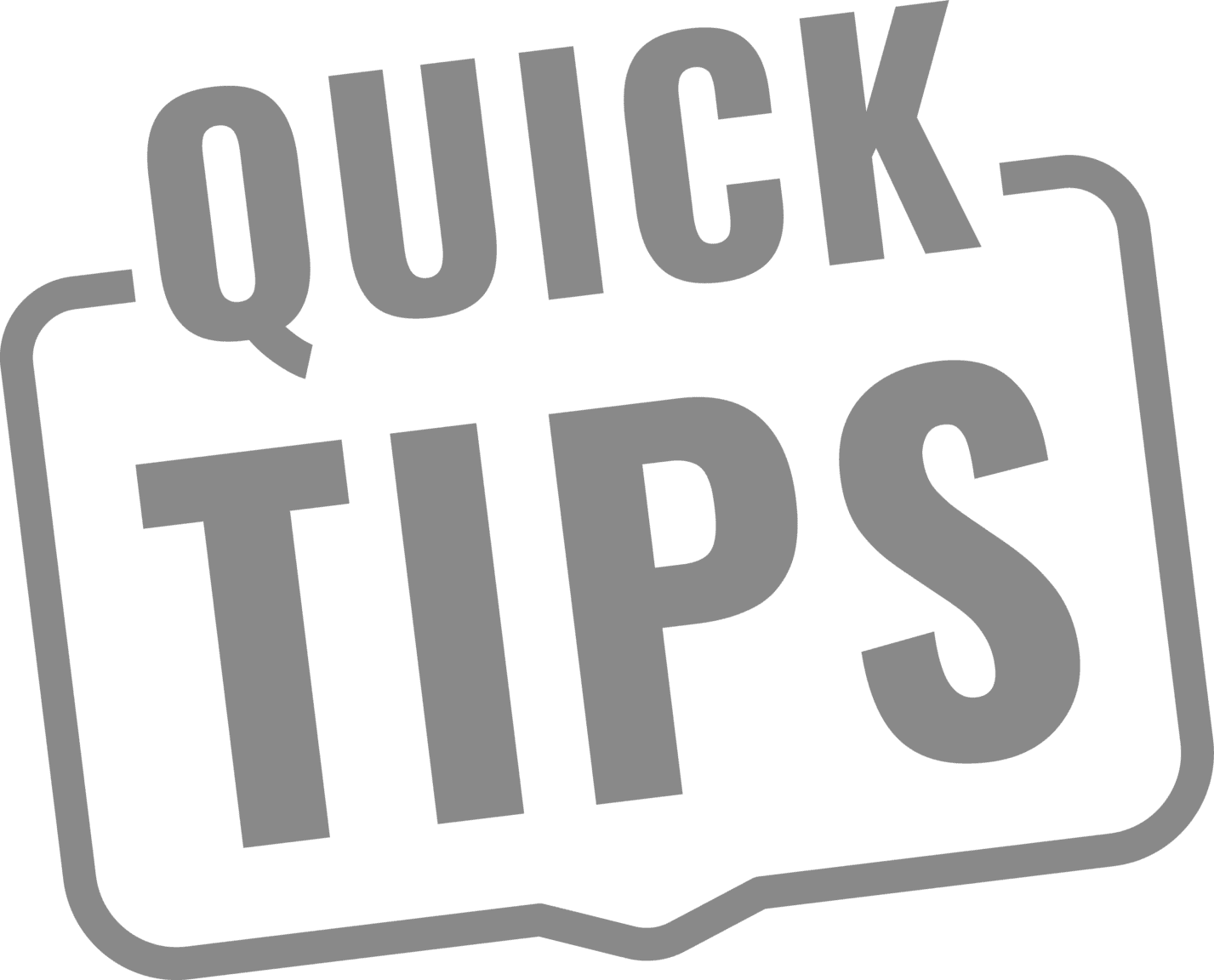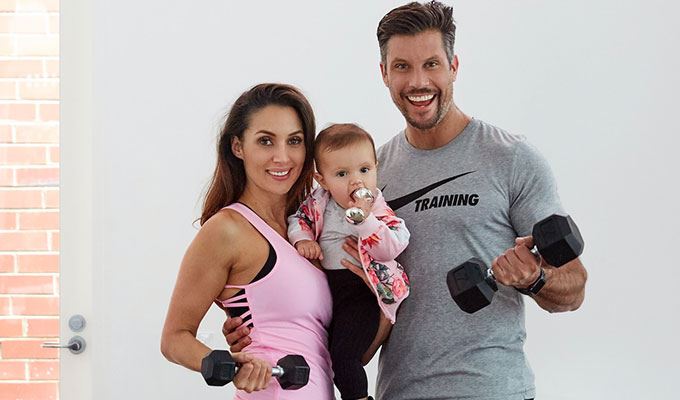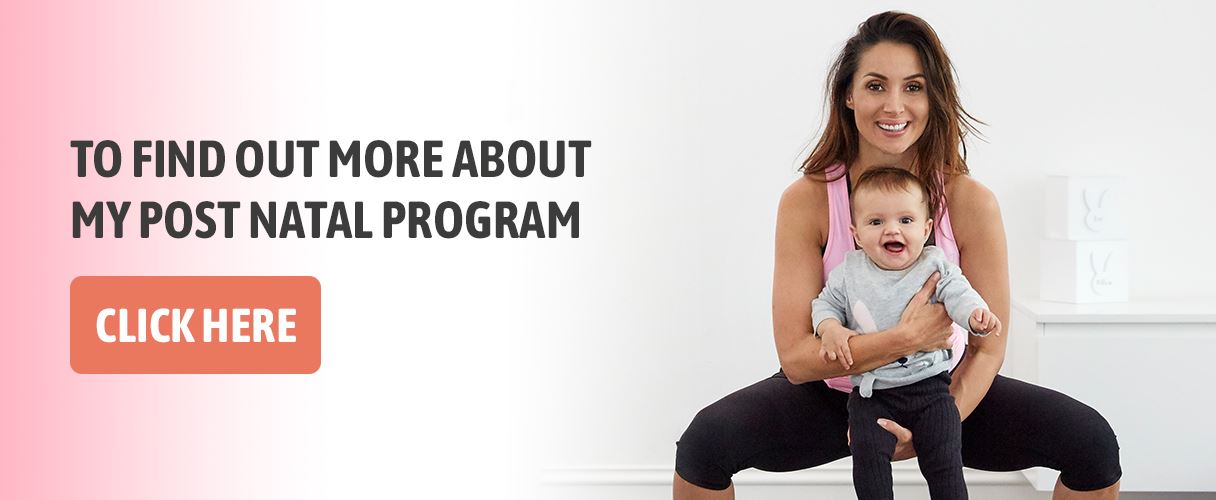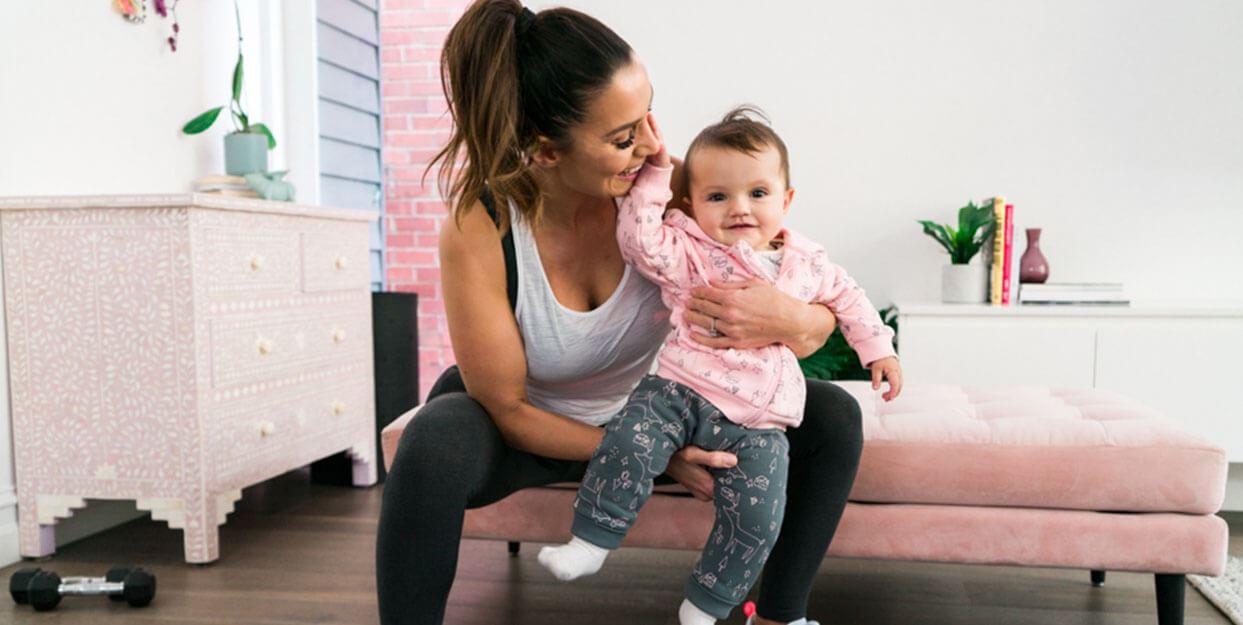After 20 years as a women’s health physiotherapist, helping thousands of women recover after having a baby, I know no two mums are alike, and everyone recovers from childbirth differently. So, although getting movement into your day is beneficial as soon as you feel up to it, don’t feel pressure to start exercising straight away.
Listen to your body, don’t push yourself, and only do what feels right.
Even if you have always exercised before and during your pregnancy, your physical recovery after childbirth can still be unpredictable. There are many factors which influence your rate of recovery after childbirth, but if you have any concerns at all, please check in with your pelvic floor physio, doctor, midwife or maternal health nurse.
When can you go for walks after giving birth?
Contents
Mother nature and time have a big part to play in the speed of your recovery, and it varies a little for everyone, but often you’ll feel ready to head out about 5 or so days post-delivery. However, it may be longer, depending on whether you had a straightforward vaginal delivery or not.
Walking is an ideal exercise to enjoy after giving birth. It’s low impact, you don’t need any special equipment, and you can do it anywhere! Just pop your bub in the pram, load up everything you need and head out the door.
My tips on how to safely start walking after having a baby:
- When you feel ready to head out for a little walk, aim for 5-10 minutes or so, to see how your body responds
- Set yourself a small goal (like heading up to the local café)
- Enjoy the experience of being outside, amongst nature and getting out and about in your community again
- If your body feels good during (and after) your first few walks, aim to gradually build up your walking distance over time
WHEN YOU’RE FEELING STRONG: You can pick up the pace or add in some hills if you feel like getting your heart pumping a little more!
Let go of your expectations (don’t worry, I get it, this was very difficult for me too), and do what feels right for you. You just grew a human in your belly, so it is no wonder it takes some time for your body to heal!
Everybody is different, every pregnancy is different, and every recovery is different.
Signs your post-pregnancy body needs more time before exercising
Although walking is low impact, if your pelvic floor muscles still feel like they need a little more recovery time, if you feel a dragging feeling or heaviness in your vagina when you walk for example, just drop back on the distance or give yourself another week or so of rest.
If this happens to you, don’t worry
There is no rush to getting back into exercise after having a baby. Everybody is different, and everyone’s rate of recovery is a little different so just focus on doing gentle pelvic floor and deep tummy work before trying again.
When going on your first walks after delivery, you shouldn’t feel any pain, or any “heaviness” in your vagina / perineal region. If you do, it’s best to wait a little longer and allow some more time to recover.
I know promised tips on exercising directly after having a baby, but it’s important to be aware that, sometimes, your body may need you to prioritise rest in this critical first 6 week period. If your body needs more time to heal and repair, listen to your body, and wait a little longer before you start.
Listen to your intuition, do what feels right (even if that means doing very little) and enjoy the incredible rollercoaster of the early weeks of being a mum.
How long does it take for your stomach to go back to normal after giving birth?
It can be disappointing to still look 6 months pregnant after giving birth, but the reality is that it takes time for the muscles and skin to tighten up again.
Your stomach muscles stretch A LOT to accommodate your growing baby, and your belly skin stretches too. Your stomach recovery time will depend on several factors, including how big your baby was, your genetics, how much (if any) abdominal muscle separation you experienced and how strong your muscles were before you were pregnant.
I found that my muscles were very weak for 2-3 months, and then started to feel a lot better after month 3. The skin on my tummy took longer to recover, and although I’ve always stayed fairly fit (thanks to being a pilates instructor as well as a physio!) my stomach still looks different to before I had my babies (it’s a bit more crinkly).

Did you know?
Often pregnancy will create some separation of your superficial abdominal muscles “the 6-pack” or rectus abdominis, and this will slowly start to recover with time, especially if you focus on gently rebuilding your post-pregnancy tummy muscles.
How to speed up the post-baby stomach recovery process
Starting some gentle pelvic floor and lower tummy tightening exercises soon after delivery will help to get your muscles working again, and it will start the gradual healing process. But, be sure to stick to SAFE abdominal exercises, appropriate to the postnatal stage you are in. If you do strong abdominal exercises (like ab crunches) too soon, it may actually take longer for your tummy to go back to normal, as you will keep stretching the recovering muscles before they are able to handle the tension.

BEWARE: If you push too hard and hit your ab exercises too soon, you can actually make your stomach recovery take longer!
What exercises should I do immediately after birth?
Here are my top 3 postnatal exercises that (once you feel up to it) are safe to get you off to a great start with your post-childbirth recovery.
Skip to our postnatal guide when you’re ready to get out of the house.
Stage 1: Start with gentle pelvic floor squeezes (not exercises)
Before you start thinking “is she for real?” understand that gentle contraction of the pelvic floor muscles is great to get going with early after delivery, because even if it feels like nothing is happening, the ‘thinking about squeezing’ will help to wake up the pathways from your brain to these muscles.
Ideally, you have been doing your pelvic floor exercises throughout your pregnancy, as it will give you a much better idea of how a normal pelvic floor squeeze feels. But if you haven’t, that’s OK, there’s no time like the present!
All squeezes should be pain-free, and if you can’t feel anything, don’t worry. Your sensation starts improving rapidly in the days after delivery, once the initial swelling begins to resolve. It’s often easiest to feel something happening if you start practising while you are lying on your side, so there’s less gravity for the muscles to work against.
Pelvic floor exercises can help to promote faster recovery because the muscles act as a pump to help reduce swelling in the perineal area. Gentle squeezes start restoring the function of these important muscles, which may have been stretched and strained during pregnancy and delivery.

You can usually safely start gentle pelvic floor squeezes 24 hours after a vaginal delivery, or 48 hours after caesarean delivery.
Note: If you have any concerns about starting squeezes check with your doctor or midwife first. And if you feel any pain you should get in touch with your doctor.
Stage 2: Move onto to gentle tummy muscle exercises
You can start gentle stomach muscle exercises in the first few days after delivery. I am not talking about sit-ups or crunches, I am talking about the gentle drawing in of the lower tummy muscles, to activate the deeper layers of the abdominal muscles which have an important role in supporting your spine and pelvic joints.
The abdominal muscles have been progressively stretched during pregnancy, and it takes time for them to gradually strengthen and tone up after giving birth. Gentle deep tummy exercises will help, as will avoiding too much strain on your healing muscles.
Think of gently drawing in the area below your belly button towards your spine. This should happen smoothly and slowly, and as your pelvic floor muscle exercises get easier you may find that the pelvic floor lift and deep tummy drawing in happens together.
So you can practice slowly drawing in your lower tummy while gently lifting your pelvic floor muscles, hold for a few seconds and then slowly release. There should be no discomfort, and it should feel like minimal effort.
You can do these exercises while you are lying down, sitting down when feeding, or standing up, like when you are in the shower.
Had a C-section? Jump ahead to your early exercise guide
G’day, Sam Wood here.
As a Dad and someone that has worked with thousands of new mums over my career, including my wonderful Snezana, I understand the balance of taking care of yourself and your bub while your body goes through such an enormous change.

My expert team and I have done all the thinking for you to put together a complete program that contains exercises to help you regain strength and confidence, meals and education to keep you healthy and happy.
Our 28 postnatal workouts are designed to be moderate intensity, low cardio and don’t contain any jumping or crunching movements that could put you at risk while your body is still recovering, but still give you a quality 28-minute workout option every day.
Your meal plan has been carefully designed by our nutrition team to provide you with the energy and nutrients you need as a new mum. Your postnatal meal plan has a significant focus on an abundance of nutrients from vegetables, quality protein and healthy fats for optimal health and help you regain strength.

You may need to prioritise rest in the critical first 6 week period, as your body needs time to heal and repair. Let go of your expectations and do what feels right for your body. You just grew a human in your belly, it always takes some time for your body to heal!
Stage 3: Walking (when you’re ready to get out of the house)
After my first baby, I had imagined I would be out strolling the streets with my fancy new pram on the day I got home from the hospital, but my body had other ideas! I wasn’t ready to head out walking until about 3 weeks post-delivery. After my second and third babies were born, not long after I got home I felt like I could easily manage walking up to the local café pushing a double pram.
My point is this: You just never know.
Even if you have exercised throughout your pregnancy and you’re fit and healthy, your recovery can be unpredictable, as there are many other factors which influence your rate of recovery.
Walking is the best exercise to start with once you are home from the hospital
Once you feel ready to get out of the house. Start with short walks, and slowly build up the distance and pick up the pace as you feel stronger.
Although walking is low impact, if you feel a heaviness or dragging feeling in your vagina when you walk, then drop back on the distance or give yourself another week or so of rest, and focus on doing gentle pelvic floor and deep tummy work before trying again.
Please don’t push yourself. There is no rush! Mother nature and time have a big part to play, so listen to your body and do what feels right. If you have any concerns, check in with your pelvic floor physio, Doctor, midwife or maternal health nurse.
Everybody is different, every pregnancy is different, every recovery is different, and that’s totally fine.
I had imagined I would be out strolling the streets with my fancy new pram on the day I got home from hospital, but my body had other ideas!

When to start exercising after a vaginal delivery
Had a caesarean? Skip ahead to your exercise guide
You can start gentle pelvic floor and deep tummy exercises soon after delivery, usually after 24 hours. In fact, we recommend getting started with your pelvic floor exercises this early, even if you don’t really feel like it, as it helps with recovery.
Then it’s up to you to listen to your body, and when you feel ready, start with some gentle walking.
If you are pain free, which means no pain in your bottom or perineum, then you can start walking.
For most mums, this is after about day 4 or 5. It could be longer if you had more intervention (such as ventouse or forceps) during your delivery.
Listen to your intuition, do what feels right (even if that means doing very little) and enjoy the incredible rollercoaster of the early weeks of being a mum.
Low impact exercise is key. Your pelvic floor and tummy muscles have had a big stretch and need time to gently recover without additional impact. Build up slowly, gradually increasing the time you are out walking.
Once you have had your 6-week check up with your doctor or midwife, and you’ve received the all clear, you can start to add some variety in your exercise routine. You might like to think about joining an online fitness program for new mums!
Our 28 by Sam Wood postnatal home fitness & nutrition program ticks all the boxes for building your fitness after having a baby!
When to start exercising after a caesarean delivery
In the first 6 weeks after the c-section, take care to roll out of bed rather than sitting straight up, and avoid heavy lifting. Of course, I know that’s easier said than done if you already have a toddler!
24 – 48 hours post-caesarean delivery
After a C-section, you can usually start gentle pelvic floor exercises as soon as your catheter is removed, usually 24-48 hours post-delivery. Once your catheter is removed you can add some tummy muscle exercises, such as gentle lower tummy squeezes, provided you have no pain.
You will likely be taking some pain killers in the first few days post-caesarean, which is an important part of your recovery. Don’t skip them!
In the first few days after a caesarean, make sure that you don’t aggravate your pain by doing too much too soon.
10 days post-cesarean delivery
Once you are home from the hospital, you may like to wait until about 10 days post-delivery to try out a short walk around the block. If you had an emergency C-section then you may need to wait a few extra days before you start walking outdoors.
Your abdominal incision takes AT LEAST 6 weeks to heal, so it’s important to avoid straining your tummy while healing is occurring.
3 weeks post-cesarean delivery
After you’ve been home from the hospital for 3 weeks or so, you might be walking for up to 15 minutes, gradually building up the time if it feels good. Keep up your daily pelvic floor exercises too.
6 weeks post-cesarean delivery
After you have had your 6-week check-up with your doctor or midwife and you have received the all-clear, you can start to add some more variety in your exercise routine!
After the all-clear from your doctor, you can start adding more exercise slowly and build up gradually, listening to your body. If you have any pain, back off and wait a few days before trying again. There is no rush, you’ll get there!
We’d love you to join our 28 family
Our 28 by Sam Wood fitness & nutrition program is safe and effective for new mums. It’s gentle enough when you’re just getting started, but tough enough to give you great results. The best part is that you can do it all from the comfort of your own home for less than $2 a day.


